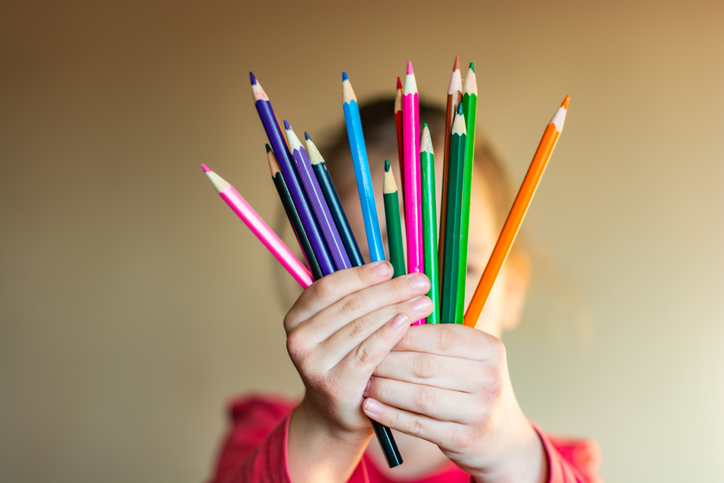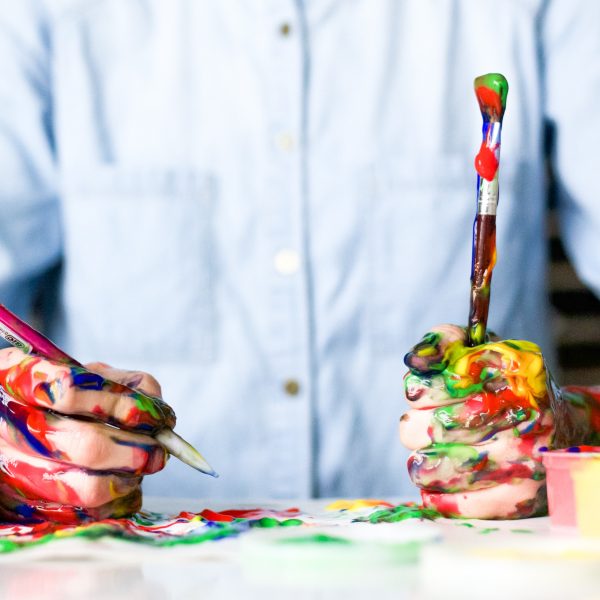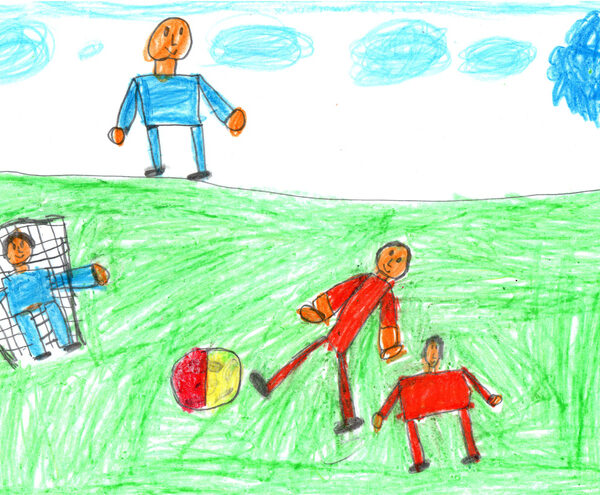Drawing pictures is great for children’s development – here’s how parents can help

When the weather’s bad and there’s no prospect of a trip to the park, we might well reach for crayons, pencils and paper as a way to keep our children entertained. But drawing is much more than a fun activity. It has wide-ranging benefits for children’s development.
Here, we’ve outlined some of the ways drawing can be beneficial to children – for communication, memory, and learning – and how parents can support their children as they express themselves creatively.
Drawing allows children to take their experiences of the world and transform these by making new connections and relationships through their inventive minds. Their knowledge, memories and fantasies all feed their imagination, and drawing allows children to explore, build on and record their own creative and imaginative ideas.
One of us (Richard Jolley) conducted research on the use of drawing in Chinese infant schools, which teach children aged from three to six years old. Building upon a long-standing focus on teaching young children representational drawing skills, the Chinese infant art curriculum also facilitates children’s enjoyment of drawing through making creative and expressive pictures from their imagination.
When children were asked to draw where they came from, one boy drew a rose – a symbol of Kunming, the city where he lived. He said that he had come from the rose, and drew his hair covered with red pollen.
Communicate and learn
Drawing also allows children to express themselves and communicate to others. A child can graphically relive a happy event, such as a birthday party, or draw out some sad feelings as a therapeutic exercise to help with an event such as a bereavement.
Drawing is an important medium in child art therapy. It provides a non-verbal way to communicate the wide range of emotional and behavioural difficulties they might be struggling with, to lead to change and growth.
Drawing can help children learn. Research shows that using drawing as a teaching activity can increase children’s understanding in other areas, such as science. A group of children were taught two strategies to help them learn a scientific concept. One strategy involved sketching out ideas and the other did not. Among the students who performed each strategy well, those who used drawing had a better understanding of the topic.
What’s more, drawing may also help improve children’s memory. Research has found that children give more information about a previously experienced event when they are asked to draw about it while talking about it. Drawing has been found to improve children’s recall of events that happened a year earlier.
Practice makes perfect – and this is of course true of drawing. It is an exercise in problem-solving, as children try to produce a two-dimensional image that stands for an object or scene from a three-dimensional world. With age, practice and instruction children typically produce increasingly visually realistic representations of the subject matter. In this process children are experimenting with different lines, shapes, spatial alignment and proportions.
How parents can help
First of all, we can help our children draw and learn through drawing by simply giving them the materials and the time to use them.
Encouragement to draw is also important. An Arts Council England report found that many children do not receive encouragement to take part in arts activities, but that those children who did were more likely to engage in the arts as adults. This suggests that encouragement may be important, not just for current engagement, but also to benefiting in the future from engaging in art.
You could also try spending time sitting with your child while they draw, perhaps chatting with them. If you are chatty and supportive children are likely to find it encouraging. We carried out research to find out about what affected children’s experiences of drawing. We found that children whose parents spent longer with them while they drew took more enjoyment from their drawing.
Psychologists working with children often ask them to draw. Parents may find drawing a useful way to gain greater insight into their children’s experiences and personal reflections.
Or, draw alongside your child. Research has shown that children often use drawings made by others, such as cartoons or drawings by their parents or siblings, as inspiration for their own drawings. Our research found that children most value being given a demonstration of drawing as support for their own drawing. Drawing with your child or collaborating on a shared drawing may provide them with inspiration.
Creating geometrical designs and patterns is often promoted as an effective means of developing children’s drawing skill, fine motor control and hand-eye coordination. Doodling can be lots of fun too and has been linked with children’s increased creativity and imagination and learning.
What’s more, doodling has been found to improve recall in adults who listened to a monotonous telephone message. You could set your child an example and doodle together.
You can also introduce your child to a range of drawing styles. Children may be inspired by a particular artistic style, such as manga, and this may provide them with an opportunity to develop their drawing skill and make sense of the world around them. Perhaps borrow some comic books from the library to inspire them. You might even want to get involved – and learn to draw in a different way together.![]()
Richard Jolley, Associate Professor of Developmental Psychology, Staffordshire University and Sarah Rose, Senior Lecturer in Psychology and Child Development, Staffordshire University
This article is republished from The Conversation under a Creative Commons license. Read the original article.
Popular

Policy
Quality
Practice
Provider
Research
Workforce
Child safety at the centre: Building a stronger ECEC system that protects, supports and empowers all
2025-10-28 06:40:20
by Fiona Alston

Policy
Practice
Provider
Quality
Workforce
National child safety training website now live ahead of 2026 sector rollout
2025-10-24 07:45:14
by Fiona Alston

Policy
Quality
Practice
Provider
Workforce
NSW passes nation-leading reforms to strengthen child safety and restore trust in ECEC
2025-10-24 07:15:45
by Fiona Alston















